Yaki mayut buti biochemical indicators of blood. What does a biochemical blood test show and what are the norms for adults
The skin of a person wants to know that everything is in order with her health. For whom the system is used, as with great accuracy we can say about the actual state of the patient. Among the widest can be called biochemical analysis blood. In older adults and children, a laboratory test can show the presence of concomitant illnesses and allow them to be informed about the state of health in general.
This view is more informative. Vіn not only help to show the disease, but also give information about those vitamins, minerals and other important life speeches that do not exist in the body of a person. Even more often, biochemical norms, deciphering the knowledge of a skin doctor) are prescribed for the detection of ailments of the SHKT, the sechostatic system, with gynecological problems and with suspicion of oncology.
But it’s hard to think that this kind of blood donation is assigned only for the obviousness of singing scargs. Navit as a patient feels good, to reveal attachment forms and early stages of illness, or a lack of important speeches.
How is the analysis
The order of building the material for the follow-up may have its own rules. Before that, how to go to the medical mortgage for that obstezhennia, the patient is not guilty to eat and drink, to fill the water.
For ventilation, the laboratory assistant takes 5 ml of blood from the patient's ulnar vein. They were given an opportunity to undergo a comprehensive test, and the results were recorded on a special form. Decryption of biochemical blood analysis in adults (the table is presented in this article) is the full data sheet for the doctor. It’s up to you to give more information about those in which the patient’s body is being tested.
The numbers themselves in the form are uninformative. In order to effectively evaluate the results, the doctor needs to take the norms of laboratory tests for equalization. The biochemistry of blood will become the same mind.
According to the criteria for analysis, there are no clearly defined norms. 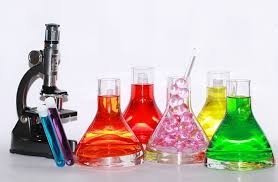 For all points of obstezhennya, there are minimal and maximum allowable indications. If the result is taken away from the normal range, then the patient's recovery is not revealed. In different cases, the significance of the boundary indications can be found about the presence of pathological changes.
For all points of obstezhennya, there are minimal and maximum allowable indications. If the result is taken away from the normal range, then the patient's recovery is not revealed. In different cases, the significance of the boundary indications can be found about the presence of pathological changes.
Deciphering the biochemical analysis of blood in adults - a table in which it is assigned to report large number points. Let's take a look at the report on the most important criteria for this laboratory study.
Albumin
Albumin is a protein of nature, as it is produced by the human liver. Vіn є one of the main proteins in the blood and is seen in the same group, which is called Change in the spivvіdnoshennia of such groups, even more informative for the doctor. Even more often, the results of vimiryuvannya albumin to judge the camp of nirok, the manifestation of oncological illness or rheumatism.
Albumin trohi decreases in women and women who are aged, as well as in curts. This protein substance can be used in low concentration during starvation, protein-rich diet, intake hormonal preparations and the opposite benefits. The increase in the significance of this criterion can be said about the presence:
- pathology of the liver of acute and chronic nature (cirosis, hepatitis, swelling);
- injuries and opikiv;
- sepsis, suppuration of infection;
- rheumatism;
- hot beds;
- heart failure;
- cancer;
- drug overdose
Normative indicators in place of albumin add up:
Hot white
Proteins are polymers of speech that are made up of amino acids. In biochemistry, the concept of "burning protein" includes the sum of proteins and is composed of albumin and globulin. Danish pokaznik is informative in diagnosing diseases of the liver, intestinal tract, oncology and in case of serious opioid lesions. A sample indicator of the total protein will show the deciphering of the biochemical blood test in adults, the table of which is presented below.
As a result of the analysis, the indicators of these figures were underestimated, we can say about the following problems of the patient:
- infectious disease;
- rheumatic diseases;
- cancerous disease.
In children with the increase in the amount of sour protein, there is an accompanying intestinal obstruction, diarrhea and vomiting, cholera and serious ailments. 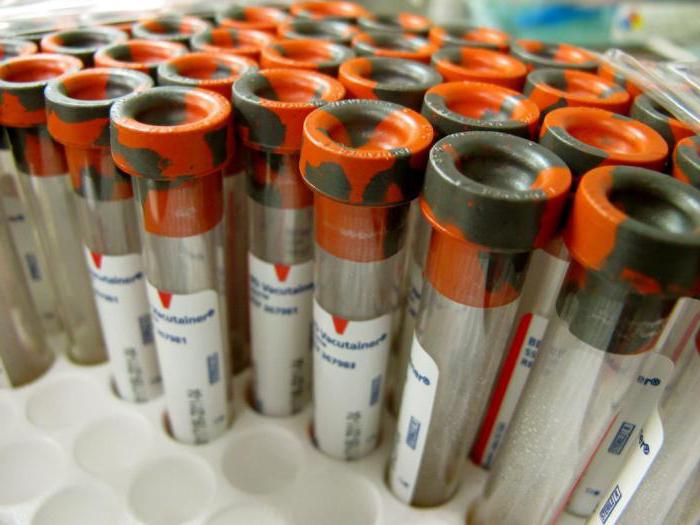
If a person has a decrease in blood biochemistry, we can say about such an illness:
- pathological manifestations in the liver, which lead to a change in the production of protein by this organ;
- glomerulonephritis;
- pancreatitis;
- damage to the robotic SKT.
Call for decreases in ailments with great blood loss, heavy stage opium, minor injuries and flaming processes, as well as in case of starvation and great physical ambitions.
C-reactive protein
For the doctor, the analysis of CRP is important in the diagnosis of diseases caused by bacteria and viruses. Also, according to the dynamics of this indicator of wines, one can judge the effectiveness of the therapy to be carried out. The increased concentration of CRP is guarded for:
- rheumatism;
- ailments of the herbal system;
- tuberculosis;
- myocardial infarction;
- cancer;
- meningitis;
- sepsis;
- aggravation after the operation.
The concentration of CRP increases during the hour of chronic illnesses.
Glycation hemoglobin
Hemoglobin is responsible for transporting acid molecules throughout the body. In the process of getting to such a protein, a glucose molecule comes out a substance, as it is called glycated hemoglobin. An increase in the concentration of iodine in the blood leads to the development of diabetes. The norm for the total amount of protein is 4.1-6.6%. Decrease in showings will take place at a trivial morning in the presence of even great physical adventures.
Myoglobin
The protein is similar in function to hemoglobin. Vin delivers acid to the heart and skeletal m'yazi. Myoglobin norms, mcg/l:
- in women - 13-75;
- in people - 18-92.1.
Increased myoglobin in the blood to talk about:
- pathology of nirok;
- myocardial infarction;
- traumas, opiki;
- doomsday manifestations.
Also, myoglobin growth during sports activities and therapy due to the stoppage of electric impulses.
Whole blood protein decreases with:
- polymyositis;
- myasthenia;
- rheumatoid arthritis;
- autoimmune reactions.
Transferin, feritin, salivary glandularity
Transferrin is the only protein that serves as a basis for transferring the hallway. The norm of yoga together is 2.1-4.12 g / l. Its concentration rises in female women and decreases in people of a frail age. 
As blood biochemistry showed an increase in transferrin, we can talk about such an illness:
- fuses;
- opika;
- liver cirrhosis;
- too much sun;
- hemochromatosis.
Changes in transferrin indicate the development of chronic deficiency anemia.
Ferritin is a protein that can be found in all lands and cells of the human body. Vіn vkazuє on the presence of the reserves of the hall. Normalization indicators of feritin, ng/l in the blood
- for people - 21-252;
- in women - 11-122;
With the rise of yoga manifestations, one can talk about the following pathologies:
- hemochromatosis from excessive sun exposure;
- oncology, leukemia;
- infectious and flammable ailments in chronic or acute forms;
- liver disease;
Low feritin indicates the presence of anemia.
ZHSS to confirm, as it is supposed to link the hall with transferrin. For the purpose of anemia, it is necessary to understand the latent JSS. The norm of this criterion is 22-61 µmol / l. Її decrease in buvaє at:
- hepatitis;
- anemia.
Decreased life expectancy is guarded for the next steps:
- infectious disease;
- plump;
- nephrosis;
- drawing;
- cirrhosis;
- hemochromatosis and thalassemia.
Rheumatoid factor
Speech grades are classified as immunoglobulins of the G-lgG class. For the human body, proteins, like in the influx of viruses, mutated and began to recognize the cells of various organs as foreign. 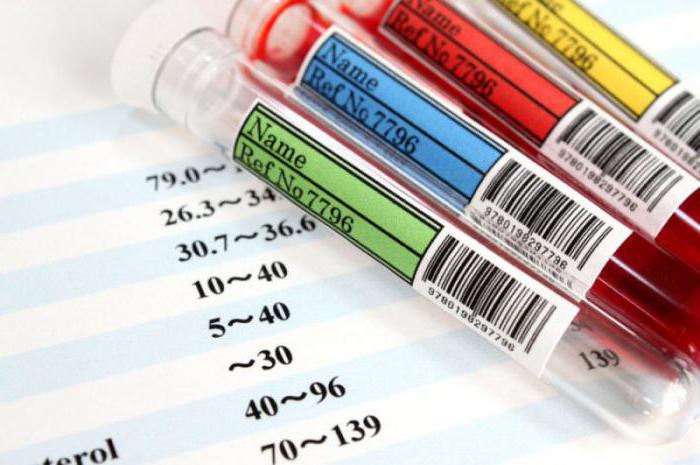 The norm of biochemical blood analysis in adults for this indication is 10.1 units/ml. In the case of increased concentration of this protein, there are such ailments:
The norm of biochemical blood analysis in adults for this indication is 10.1 units/ml. In the case of increased concentration of this protein, there are such ailments:
- liver cirrhosis;
- polymyositis;
- rheumatoid arthritis;
- dermatomyositis;
- infections;
- systemic red dog.
fermenti
Decryption of biochemical blood analysis in adults, a table of what is seen by the patient in the hands, to avenge data about the number of offensive enzymes:
- Amilaza. The Danish enzyme is seen in the fold (diastase) and in the pharynx. The rest is called pancreatic amylase. Diastasis is characterized by standards of 29-101 units/l. The revisiting of this indicator is evidence of anomalies of the submucosa, cholecystitis, hostria peritonitis, parotitis and cerebrodiabetes. Pancreatic amylase is normal, but it is staggered in the ranges of 0-52 units/l. Increased concentration to talk about the pathology of the subscapular burrow.
- Lactate dehydrogenase is an enzyme that can be practically found in all organs and tissues. With age, the concentration drops. If the newly born LDH is to become 2010 od/l, then after 12 years the standard is reduced to 252 od/l. A high concentration of this enzyme speaks of hypoxia, disease of the heart and vessels, liver, legion and may indicate cancer.
- Creatine kinase is an enzyme that provides the energy of the mucus. Please show biochemical blood test. Norms, indications of this enzyme vary widely depending on the status. As for the newly born, the pokaznik is as high as 650 od/l, then for the grown-ups it is close to 202 od/l.
Increased concentration of creatine kinase to talk about heart disease, right, hypothyroidism, CNS ailments and about cancer. The concentration of this enzyme is reduced in case of malignant dystrophy and hypodynamia. 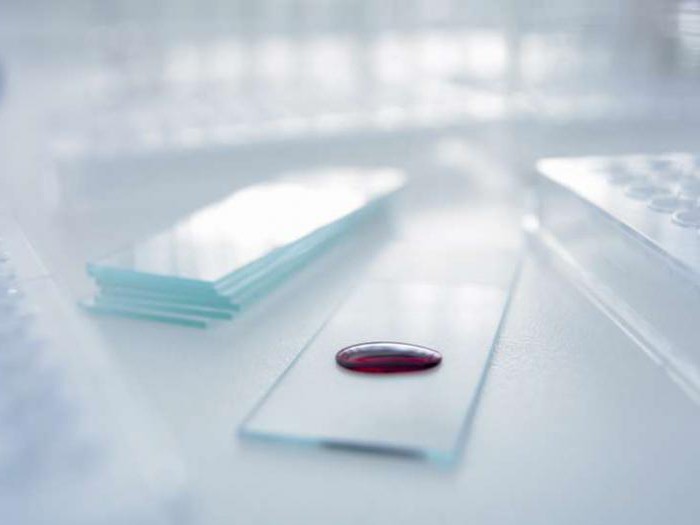
Lipidi
The main indications for biochemical blood analysis include lipids, mmol/l:
- high cholesterol, standard 3.2-6.12;
- LDL, standard for people - 2.26-4.81, for women - 1.9-4.51;
- HDL, the standard for people is 0.73-1.74, for women - 0.87-2.27.
Depending on the indications of these criteria, we can speak about the disease of the heart and vessels, nirok, gout, anomalies of the submucosa, obesity, anorexia and alcoholism. Decrease in lipids to report anemia, heart failure, infections, cirrhosis and liver cancer, ailment legenia.
Carbohydrates
Table of biochemical blood analysis, deciphering of which calls out the interest of all patients, information about the amount of carbohydrates:
- Glucose. The virishal official in the diagnosis of cerebrodiabetes. The norms of glucose in the blood, mol / l to establish: in children for a century and a half - 3.34-5.6; in mature adults - 3.95-5.82; after 60 years - 6.4. High zmist What can we say about endocrine diseases, circulatory diabetes, heart attack and stroke, contagion of the pharynx and nirok. Decrease in glucose is an indication of the disease of the SHKT, the destruction of that hypothyroidism.
- Fructosamine is a criterion for diagnosing cerebrodiabetes and assessing the viability of yogi. Yogo boundary concentration - 203-282 µmol / l. In times of improvement, there are signs of anomalies of blood, circulatory diabetes, or hypothyroidism. With reduced concentrations of fructosamine, there is a risk of hyperthyroidism and ailments.
pigments
Among other indications in the analysis of "biochemistry of blood" one can know the sign "bіlіrubіn". Vin is measured in µmol/l
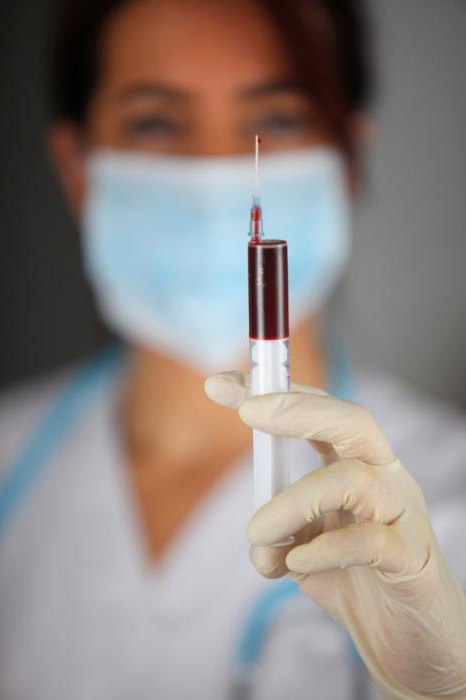
Advances in bilirubin to report anomalies of the liver and deficiency in vitamin B 12 .
Other warehouses of blood biochemistry
The skin lecar can be detected, how to decipher the biochemical blood test: the norm (table: older children) of the skin component is necessary for the assessment of the patient. Krіm rehabilitated more than warehouses from the results of this laboratory report include:
| Pokaznik | Alone in the world | Norm |
| Creatinine | µmol/l | to roku - 17-36 from year to 14 years - 28-61 women - 52-98 people - 61-116 |
| Sechic acid | up to 14 years - 1.83-6.42 people - 210-420 women - 151-352 |
|
| Sechovin | mmol, l | up to 14 years - 1.83-6.42 matured 14-60 years - 2.51-6.42 after 60 years - 2.91-7.52 |
| potassium | to rock - 4.12-5.31 1-14 years - 3.42-4.72 grown up - 3.51-5.54 |
|
| calcium | 2,23-2,52 | |
| sodium | 136-145 | |
| Chlorine | 98-107 | |
| Magnesium | 0,63-1,12 | |
| Phosphorus | up to 2 years - 1.46-2.15 2-12 years - 1.45-1.77 matured 12-60 years - 0.88-1.46 women after 60 years - 0.9-1.33 people after 60 years - 0.73-1.22 |
|
| Zalizo | µmol/l | to rock - 7.22-17.92 1-14 years - 9.03-21.52 women - 9.0-30.4 people - 11.63-30.42 |
| Vitamin B12 | pg/ml | 180-900 |
| folic acid | ng/ml | 3,1-18 |
When assessing the viability of the data, taken away as a result of the investigation of blood biochemistry, the standards of the laboratory are insured, in which the analysis was carried out. In order to make an accurate diagnosis, the doctor will obov'yazkovo recognize additional follow-up.
Biochemistry (Greek “bios” – “life”, biological and physiological) is a science that develops chemical processes in the middle of cells, which instills the vitality of the whole organism into those of the singing organs. The method of science of biochemistry is the recognition of chemical elements, the structure and process of the exchange of speech, the methods of its regulation in the clitin. For other purposes, biochemistry is the science of the chemical structure of the clitin and living organisms.
To understand, now biochemistry is needed, we can imagine science as an elementary table.
As you can see, the basis for all sciences is anatomy, histology and cytology, which are still alive. On their basis, biochemistry, physiology and pathophysiology were inspired, deriving knowledge of the functioning of organisms and chemical processes in the middle of them. Without these sciences, they can't learn the others that are represented in the upper sector.
Є th іnshiy pіdkhіd, yakim of science is divided into 3 types (equal):
- Ті, which develop clitin, molecular and tissue life (sciences, anatomy, histology, biochemistry, biophysics);
- Investigate pathological processes and diseases (pathophysiology, pathological anatomy);
- Diagnosing an abnormal reaction of the body to illness (clinical sciences, such as therapy and surgery).
The axis is so mi z'yasuvali, as if the middle of the sciences occupies biochemistry, chi, as they call it, medical biochemistry. Even if the behavior of the body is abnormal, the process of yogo metabolism is dependent on the chemical structure of the clitin and to reveal to itself the hour of the HAC.
Need to do analyses? What is the biochemical blood test?
Biochemistry of blood - the same method of diagnosis in laboratory minds, which shows illness on different directions medicine (for example, therapy, gynecology, endocrinology) and help in the work of internal organs and the exchange rate of proteins, lipids and carbohydrates, as well as the availability of microelements in the body.
VAK, or a biochemical study of blood, is an analysis, for the help of which one can take the widest information about various diseases. For yoga results, one can recognize the functional state of the body and the skin organ in a sane state, even if it is an illness, if it attacks a person, so it will otherwise appear in the results of the HAC.
What to enter to the biochemistry warehouse?
 It’s not smart, it’s not necessary, to conduct biochemical studies of absolutely all indications, and moreover, the more there are, the more blood is needed, and the more expensive the stench will cost you. Therefore, the standard and complex VAKs are distinguished. The standard one is assigned in the majority of symptoms, and the axis of extensions with additional indications assigns a drug, so that you need to know additional nuances of fallow symptoms in terms of symptoms and for the purpose of analysis.
It’s not smart, it’s not necessary, to conduct biochemical studies of absolutely all indications, and moreover, the more there are, the more blood is needed, and the more expensive the stench will cost you. Therefore, the standard and complex VAKs are distinguished. The standard one is assigned in the majority of symptoms, and the axis of extensions with additional indications assigns a drug, so that you need to know additional nuances of fallow symptoms in terms of symptoms and for the purpose of analysis.
Main indicators.
- Burning protein in the blood (TP, Total Protein).
- Bilirubin.
- Glucose, lipase.
- ALT (Alanine aminotransferase, ALT) and AST (Aspartate aminotransferase, AST).
- Creatinine.
- Sechivin.
- Electrolytes (Potassium, K/Calcium, Ca/Sodium, Na/Chlorine, Cl/Magnesium, Mg).
- Hot cholesterol.
The developed profile includes whether or not these additional indications (as well as other, more specific and higher-level straightening, not known in this translation).
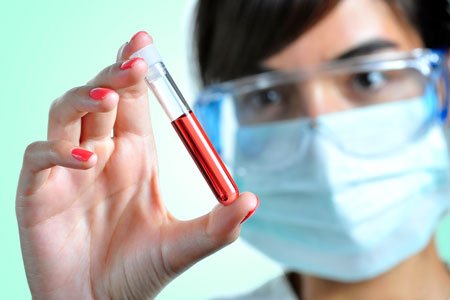
Biochemical halal therapeutic standard: norms of mature
| Biochemical blood test | Normy |
|---|---|
| (TANK) | |
| Hot white | vіd 63 to 85 g/l |
| Bіlіrubіn (direct, indirect, hot) | hot up to 5-21 µmol/liter |
| direct - up to 7.9 mmol/liter | |
| indirect - to be secured, as a difference between direct and indirect showcases | |
| Glucose | vіd 3.5 to 5.5 mmol/l |
| Lipase | up to 490 Od/liter |
| AlAT and AsAT | for people - up to 41 Od / liter |
| for women - up to 31 Od / liter | |
| Creatinine phosphokinase | up to 180 Od/liter |
| ALKP | up to 260 Od/liter |
| Sechovin | vіd 2.1 to 8.3 mmol/l |
| Amilaza | vіd 28 to 100 Od/l |
| Creatinine | for people - vіd 62 to 144 µmol/l |
| for women - vіd 44 to 97 µmol/l | |
| Bіlіrubіn | vіd 8.48 to 20.58 µmol/l |
| LDH | vіd 120-240 Od/liter |
| Cholesterol | vіd 2.97 to 8.79 mmol/liter |
| Electrolyte | Up to 3.5 to 5.1 mmol/liter |
| Ca vіd 1.17 to 1.29 mmol/liter | |
| Na vіd 139 to 155 mmol/liter | |
| Cl vіd 98 to 107 mmol/liter | |
| Mg vіd 0.66 to 1.07 mmol/liter |
Deciphering biochemistry
The interpretation of data, as described above, is carried out according to the singing values and norms.
- Hot white- Why is the quantity of protein that exists in the human body. Read the norms of the norms on the rihnni in organism (on the problems of the Pechinki, Nirok, the Sechostatyu systems, the abuse of the aboat cancer), with Degizdratsi (pineword) PID Hour of the Duhesnnya, the Sulfantynnip in especially the Great Rosemy, the nuclear sophomic abstin live diet, hunger strike, intestinal ailments, liver disease, or in case of impaired synthesis in the case of congenital ailments.
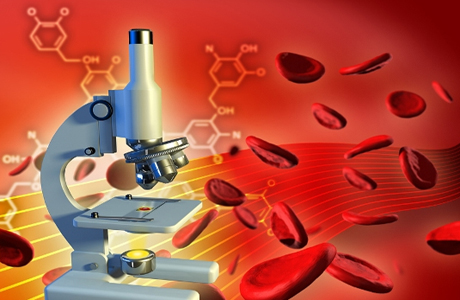 Albumin- the whole protein fraction, which is found in the blood, with a high concentration. Vіn zv'yazuє water, and yogo low quantity to bring up to the development of swelling - water does not zatrymuєєєєєєєєєєєєєєєєє і blіt's blood, but squander іn tissue. Sound, as protein decreases, then the amount of albumin falls.
Albumin- the whole protein fraction, which is found in the blood, with a high concentration. Vіn zv'yazuє water, and yogo low quantity to bring up to the development of swelling - water does not zatrymuєєєєєєєєєєєєєєєєє і blіt's blood, but squander іn tissue. Sound, as protein decreases, then the amount of albumin falls.- Analysis of bilirubin in plasma(Direct and indirect) - this is the diagnosis of pigment, which is established after splitting hemoglobin (toxic for humans). Hyperbiliary rubinemia (transferred bilirubin) is called zhovtyanitsa, moreover, they see clinical zhovtyanitsa over the liver (among the newborns), liver-clitin and pidpechinkova. It indicates anemia, great bloody after hemolytic anemia, hepatitis, liver failure, oncology and other illnesses. It looks like a pathology of the liver, but it can also move in a person, as she suffered a blow with injuries.
- Glucose.Її rіven signifies in carbohydrate exchange, that is the energy in the organism and how pratsyuє pіdshlunková zaloza. If glucose is too rich - it can also be diabetic, physically addictive, or if it is injected with the use of hormonal preparations, it is also less hyperfunction of the subductal ridge, ailments of the endocrine system.
- Lipase - decompose fat enzyme, which plays an important role in the exchange of speech. Yogo pіdvischennya svіdchit about pіdshlunkovu ailment.
- ALT- "hepatic marker", it marks the pathological processes of the liver. Increased norm inform about problems in the work of the heart, liver or hepatitis (viral).
- AST- “Heart marker”, you can see the quality of the robotic heart. Traveling norms to report about the destruction of the robotic heart and hepatitis.
- Creatinine- Give information about the functioning of the field. Movements, as if a person has a disease, or a chronically ill nirok, or they are afraid of ruining the m'yazovoi tissue, endocrine disorders. Testaments in people who live rich meat products. Therefore, creatinine decreases in vegetarians, as well as in vagi, and it is not even necessary for diagnosis.
- Analysis of sechovin- Tse doslіdzhennya produktіv blkovogo obmіnu, robobi pіnkіnki nirok. The dependence of the indicator is observed when the work is damaged, if the stench cannot cope with the damage to the body, and the decrease is typical for women, with diet and damage, caused by the work of the liver.
- gmt inform biochemical analysis about the exchange of amino acids in the body. This high indicator is seen in alcoholism, and also, as a result, the blood is affected by toxins, or liver dysfunction and liver paths are transmitted. Low - yakscho є chronic disease of the liver.
- LDH in the researched characterizes the overshoot of the energy processes of glycolysis and lactate. A high indicator indicates a negative impact on the liver, legenia, heart, and the child's ailment (sickness for pneumonia, heart attack, pancreatitis and others). A low indicator of lactate dehydrogenase, as well as low creatinine, is not indicative of diagnosis. As a rule, LDH increases, the reasons for women can be: increased physical pressure and vaginess. The new people have the same ostentatious troch of testaments.
- Electrolyte balance pointing to the normal process of exchange of speech from the client and from the client back, including the process of the work of the heart. Nutritional disorders are often the main cause of an imbalance of electrolytes, but it can also be vomit, diarrhea, hormonal or robotic imbalance.
- cholesterol(cholesterol) high - rises, as if a person is obese, atherosclerosis, dysfunction of the liver, thyroid gland, it decreases if a person is on a fat-free diet, with septicemia and other infections.
- Amilaza- an enzyme that can be found in the sleigh and the pidshlunkovy. High rіven show that it is cholecystitis, signs of circulatory diabetes, peritonitis, parotitis and pancreatitis. Also move, as if to get used to alcoholic drugs or preparations - glucocorticoids, and also to toxicosis in the same way.
Indications in biochemistry, even rich and basic, and additional ones, also complex biochemistry is carried out, until such time as the main and additional indications are included in the doctor's examination.
Create biochemistry for the present: how to prepare for analysis?
A blood test for Bx is an advanced process, and it is necessary to get ready for the next step, and with a lot of seriousness.
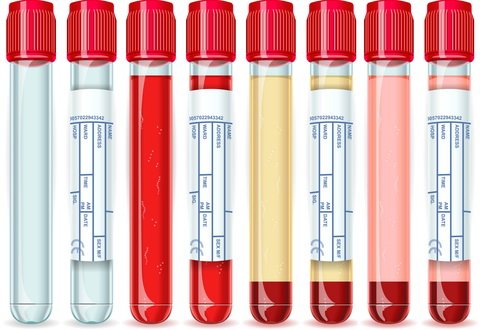
You need to come in, so that the analysis will be accurate and the cost of additional factors will not be added to the new one. In the other case, it is possible to pass on analyses, the smallest change of minds will significantly impinge on the process of metabolism.
Take the stars and how to give blood
Blood donation for biochemistry is carried out by means of blood sampling with a syringe from a vein on the ulnar fold, sometimes from a vein on the front or on the wrist. The average person has 5-10 ml of blood, so that the main indications are obtained. It is necessary to analyze the analysis of biochemistry - then take a larger amount of blood.
The norm of indications in biochemistry on a special setting in different species can be slightly changed in average cordons. The express method can be used for reviewing the results within one day.
The procedure for taking blood may be painless: sit down, the procedural nurse prepares a syringe, put a tourniquet on the arm, make a space, give an injection, use an antiseptic and take a blood sample.
Take the blood from the venous blood at the test tube and give it to the laboratory for diagnosis. The doctor-laboratory assistant distributes the plasma specimen in a special device, which is a creation for the designation with high accuracy of indications in biochemistry. It is also necessary to carry out processing and blood sampling, indicating the dosing of the procedure for carrying out biochemistry, diagnosing and taking the results, stalely in the presence of such indications, as if waiting for the drug, it draws up a form of results in biochemistry and laboratory-chemical analysis.
Laboratory and chemical analysis is passed on to the doctor for a long time, which makes a diagnosis and prescribes healing.
VAK with its impersonal variegated ostentatious people gives the opportunity to inspire a great clinical picture of a specific person and a specific ailment.




